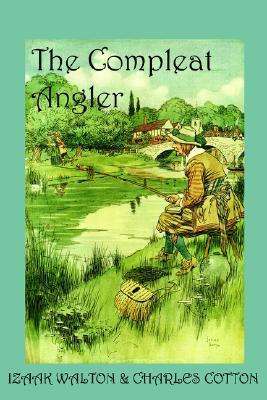Chapter XVIII — The Compleat Angler
byChapter XVIII – The Compleat Angler draws attention to a selection of modest freshwater fishes often overlooked in favor of larger, more celebrated species. Yet Piscator, with his calm authority and love for nature, makes it clear that these smaller creatures contribute richly to the experience of fishing and the health of local waters. He discusses them not with dismissal, but with admiration for their resilience, charm, and usefulness. The Minnow, first among them, is given a generous description. It is praised for its lively movements, its distinct speckled skin, and its surprising role in cuisine. Though rarely fished for sport, it provides a subtle delight for those who value detail and patience.
Minnows, though diminutive, symbolize the finer joys of angling: noticing the small things, savoring simplicity, and finding satisfaction in modest pursuits. A recipe known as Minnow-tansies, combining the fish with foraged herbs and floral ingredients, reflects not only old English culinary habits but also the seasonal harmony between cooking and fishing. These dishes once served not just flavor, but as healing tonics aligned with springtime and convalescence. Piscator’s reflection hints at an age when ingredients were chosen for their natural alignment with the rhythms of life. Thus, even a tiny fish could earn a place of honor both in the stream and on the table, reminding the reader that nothing in nature is without purpose.
Next, the Loach is introduced—quick, slippery, and found in fast-running streams. It favors the company of gravel beds and avoids still or murky waters. The Loach’s reputation is bound not only to its flavor but also to its supposed healing properties. In times past, this fish was offered to the ill, seen as light on the stomach and easy to digest. It thrives where the water flows fresh, and its presence speaks to the purity of its environment. For anglers seeking a calm, rewarding catch, the Loach proves dependable and delicate.
Piscator then describes the Miller’s‑Thumb, also called the Bull-Head, which suffers from an unfortunate name and a face only a fisherman could love. This stubby fish lacks the elegance of trout or perch, yet it compensates with its robust taste and relative abundance. Found near stones and in riverbank hollows, it prefers dark hiding places, making it a rewarding find for those who pay attention. Though the Bull-Head does not appeal to all anglers visually, its reliability and ease of capture lend it a practical value. Young fishermen are often introduced to the pleasures of fishing through its pursuit.
Last in this sequence is the Sticklebag—a small, bristly fish whose defensive spikes set it apart. Though rarely eaten, it plays a vital role in freshwater ecosystems and serves as a curiosity for beginners. It is watched more than it is caught, appreciated for its energy and its ability to stir a child’s excitement. Sticklebags often serve as an early lesson in nature’s complexity, showing that even the least impressive fish has a role. They are reminders that angling is not solely about consumption but also about observation and wonder.
Throughout this chapter, Piscator gently weaves knowledge with affection. The simplicity of these small fish, paired with the quiet joy of discovering them, stands in contrast to more boastful angling adventures. There is wisdom in finding depth in the humble and pleasure in the routine. By learning to notice and respect the overlooked, anglers grow not just in skill but in character. Fishing becomes more than sport—it becomes a conversation with the living water. In appreciating even the smallest finned inhabitant, the angler steps closer to nature’s heartbeat.
These reflections encourage patience and attentiveness, qualities essential both for successful fishing and for a life well lived. The chapter reminds us that joy is not measured by the size of the catch, but by the richness of the moment. To sit by a brook, to study a stream, and to find value in a fish no longer than one’s finger is to participate in a form of reverent simplicity. Angling, in this sense, becomes a practice not of dominance but of communion—a chance to pause, learn, and be present with the world.


